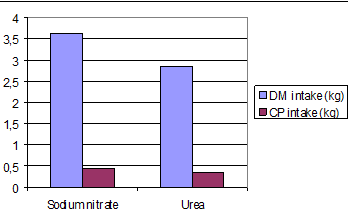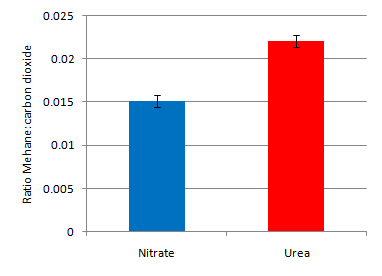 |
 |
| Figure 1: Daily DM and CP intake of yellow cattle fed sodium nitrate or urea as NPN sources in basal diet of NaOH treated rice straw | Figure 2: Ratios of methane to carbon dioxide in rumen gas from yellow cattle fed diets consisting of NaOH treated rice straw, dried cassava leaves, cassava root meal, molasses with sodium nitrate |